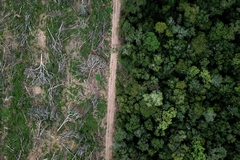Lonza Profits Drop 33% in H1
Sales in Life Science Ingredients declined by 13.7 % to CHF 506 million, owing to the impact of destocking and weak end-user markets. Some upward trends, especially in China, were noted in June.

22 Jul 2009 Lonza has said that the nature of it’s Custom Manufacturing business model, along with a slowdown in parts of Life Science Ingredients, led to a weaker performance in the first half of 2009. Group sales were down by 9.2% to CHF 1 329 million. Cost and efficiency improvements, along with lower raw material prices, partly compensated for lower capacity utilization levels, limiting the decline in EBITDA to 15.3% (CHF 300 million). Higher depreciation charges stemming from the start-up of new projects resulted in a disproportionate decline in EBIT of 30.6 % to CHF 163 million.
Net profit declined on a comparable basis by 32.9 % to CHF 118 million. Cash flow was temporarily impacted by an inventory run-up in Custom Manufacturing ahead of an anticipated stronger second half, backed by customer orders. The full conversion into equity of the four-year CHF 430 million convertible bond helped reduce gearing from 76 % at the end of 2008 to 52 %. In addition, the successful placing of a CHF 300 million straight bond with a coupon of 3.75 % maturing in 2013 ensures long-term financing of the announced growth projects on attractive terms. Both contribute to further strengthening Lonza’s balance sheet and increasing financial flexibility. The projects to deliver sustainable, above-average, profitable growth continue to be on or ahead of schedule. The healthy increase in the project pipelines raises confidence of an optimal utilization of these new assets in the mid term.
Sales in Life Science Ingredients declined by 13.7 % to CHF 506 million, owing to the impact of destocking and weak end-user markets. Some upward trends, especially in China, were noted in June. EBIT decreased by 20.7 % to CHF 69 million, due to the impact of the economic crisis and particularly of the downturn in demand for bio cides and hygiene products, and the de-stocking of vitamins and vitamin intermediates. The lower asset utilization was partially offset by stringent fixed-cost savings and positive purchase price differences.
Within Nutrition Ingredients, a combination of reduced meat consumption, lower feed production and high inventories resulted in an overall weakness in demand for nicotinates (vitamin B3) for feed applications. Pricing was successfully defended. Sales of niacin/niacinamide for food applications were lower, mainly due to slower demand resulting from customer inventory controls and stocking policies in response to the economic climate. Pricing and raw materials were stable in the first half, maintaining margins at the anticipated level. Sales of niacin for pharmaceutical applications were lower than expected, but should pick up in the second half of the year.
Carniking enjoyed strong demand in the pet food segment, with good results above last year’s level. Demand in the swine food sector was below expectations, owing to the current economic environment in Europe and the USA.
Sales of Carnipure (l-carnitine) were strong during the first half of the year due to new functional food launches in emerging markets and solid sales in the USA of dietary supplements and beverages. Sales in Japan were weaker than expected.
Sales of Meta metaldehyde, a specific molluscicide, developed according to plan, despite the negative impact of adverse weather conditions at the beginning of the year which resulted in a lower incidence of slugs in gardens, and competition from alternative treatments. In China, the first sales of MetaLi for the prevention of a specific disease (schistosomiasis) were recorded. The Meta portfolio was strengthened by the addition of an olfactive offering. This will enable a further increase in safety standards to be achieved and further strengthen Lonza’s position as a leading supplier of Meta, the company reported.
The scale-up of the current plant for production of Pro-K in Shawinigan (CA) is progressing, with regular vitamin K3 sales to the feed industry in the first half of 2009.
The larch arabinogalactan business, with the products FiberAid and Resist Aid, was slightly below expectations during the first half of the year, as key customers experienced lower demand for their products.












